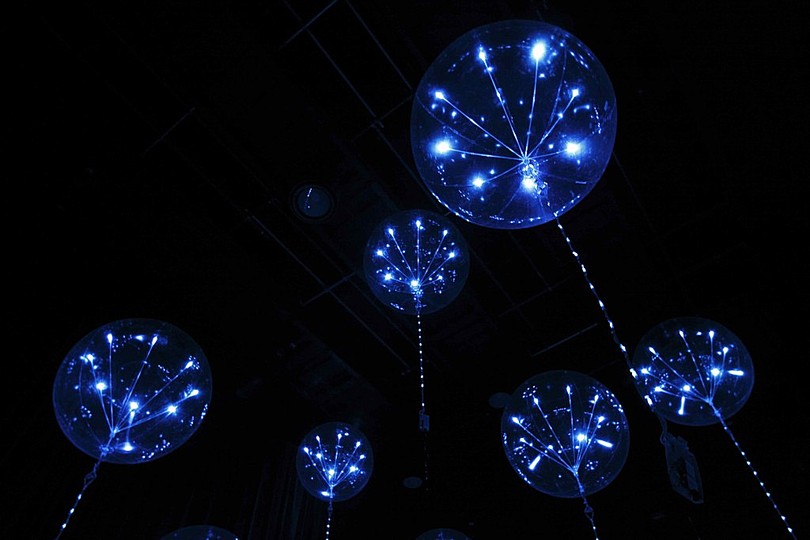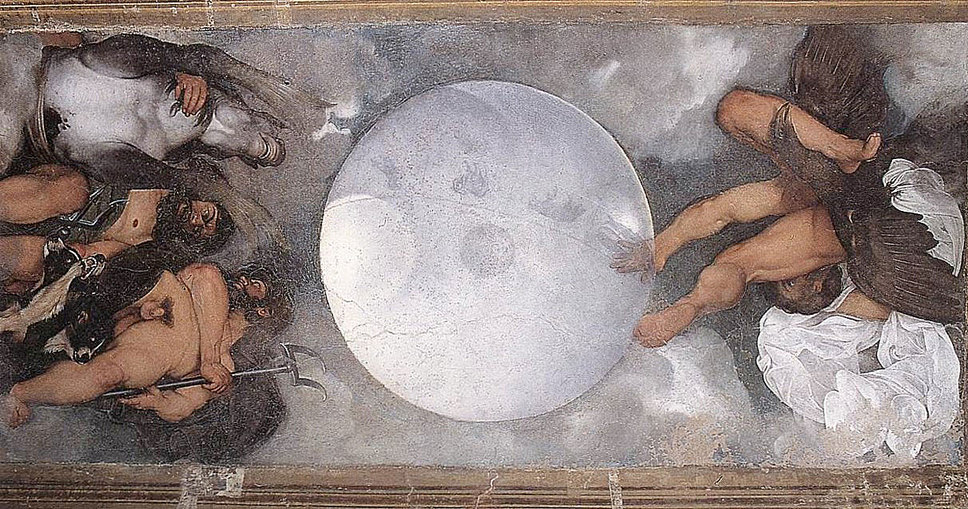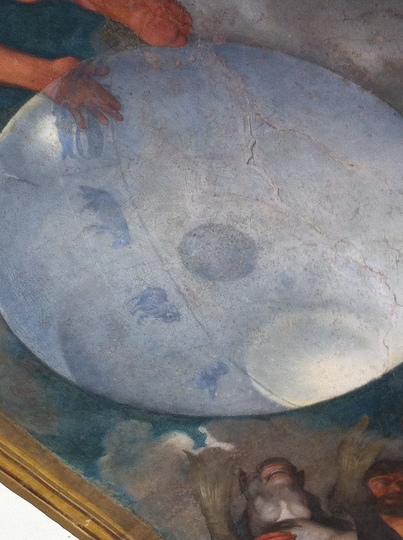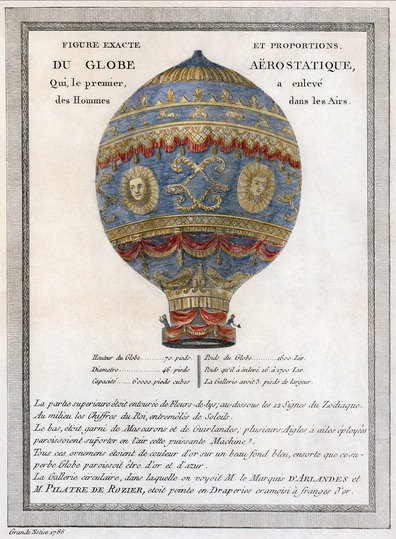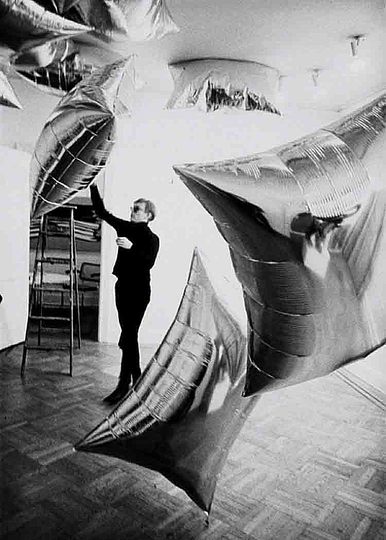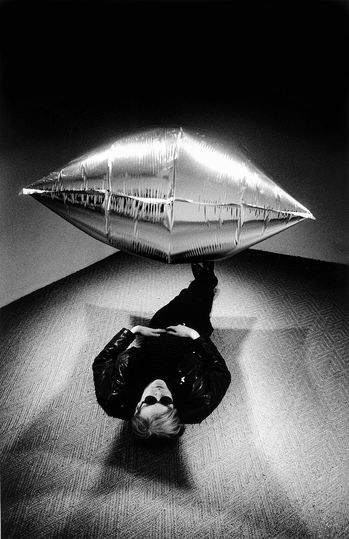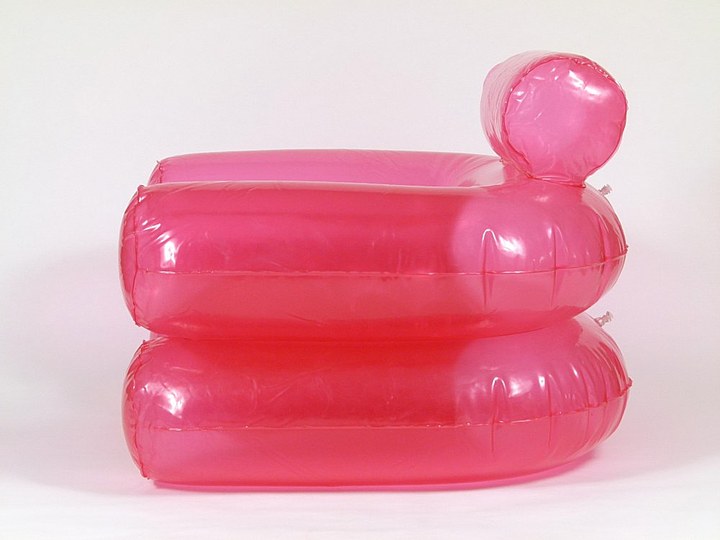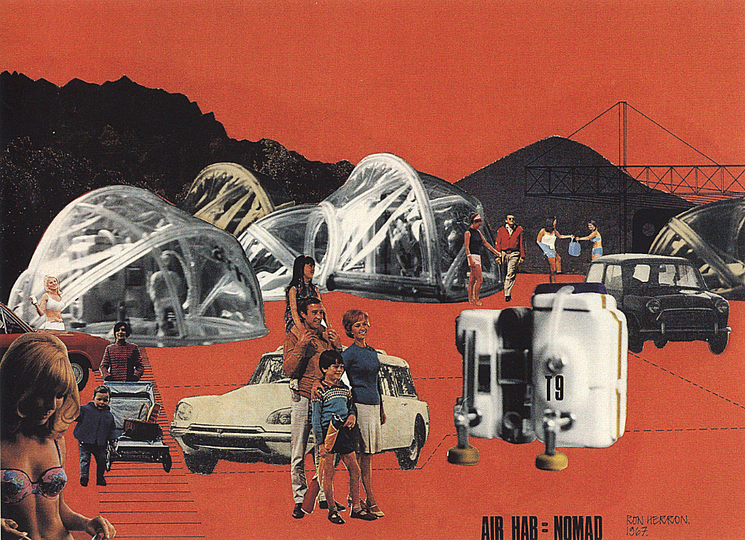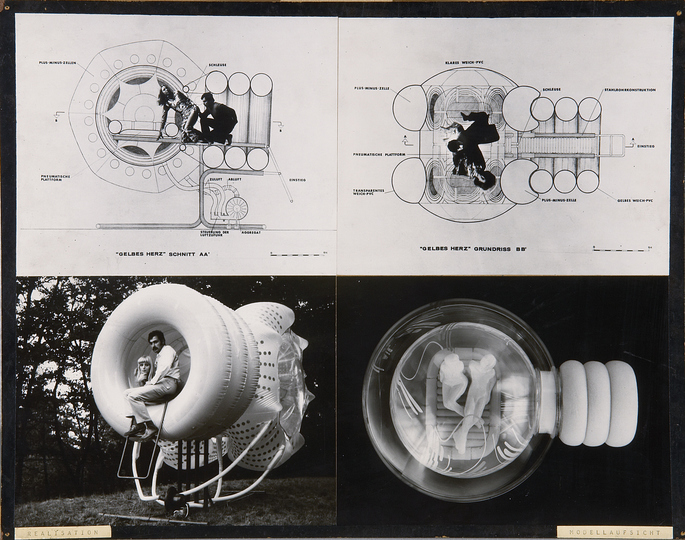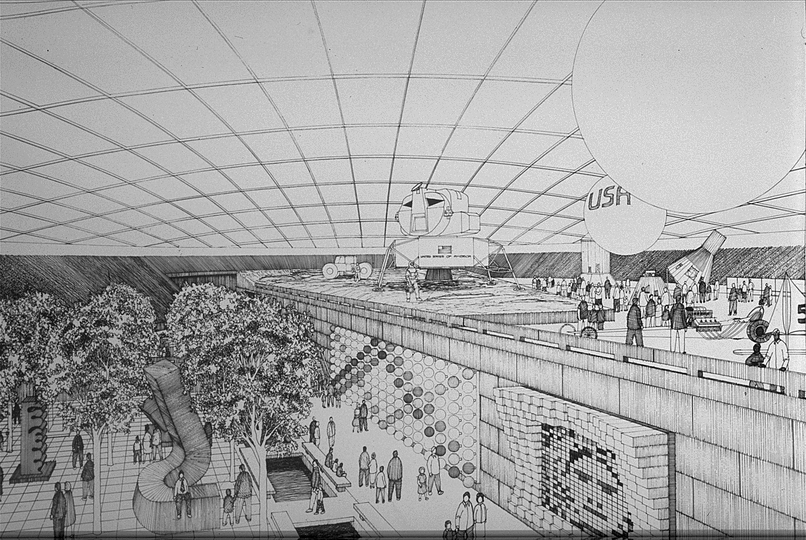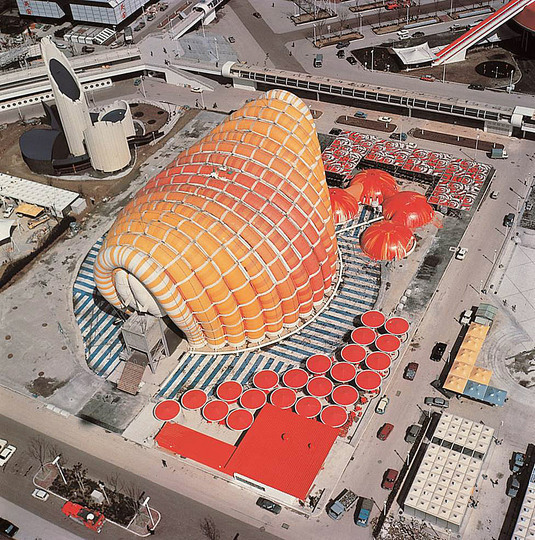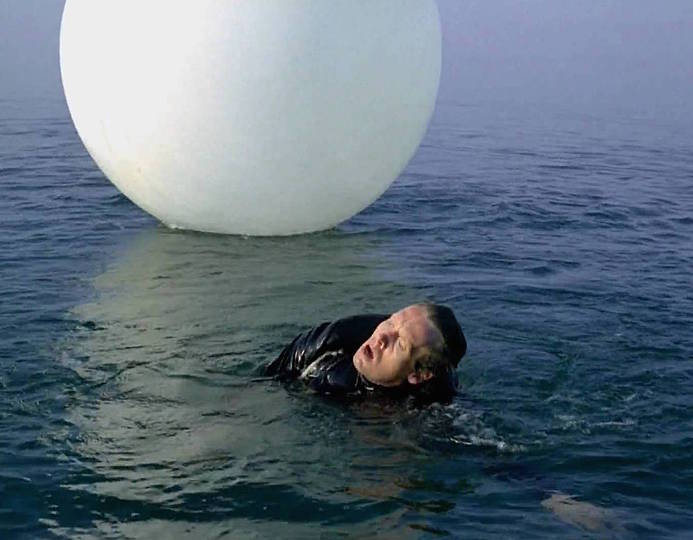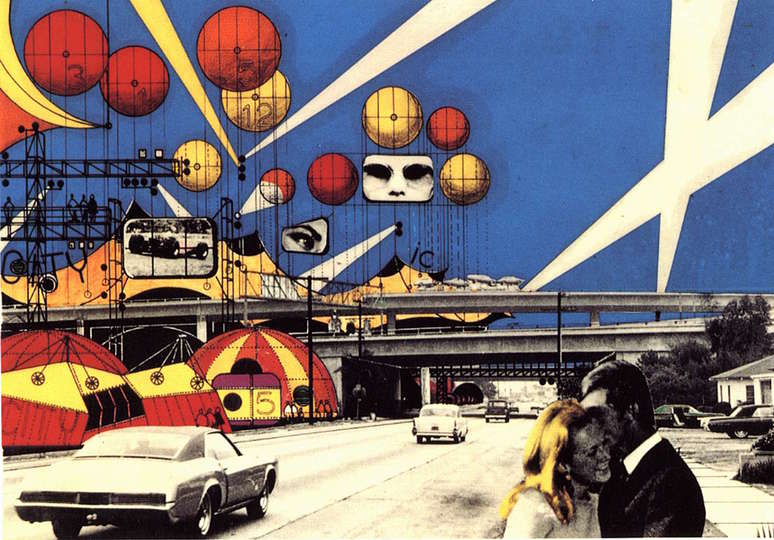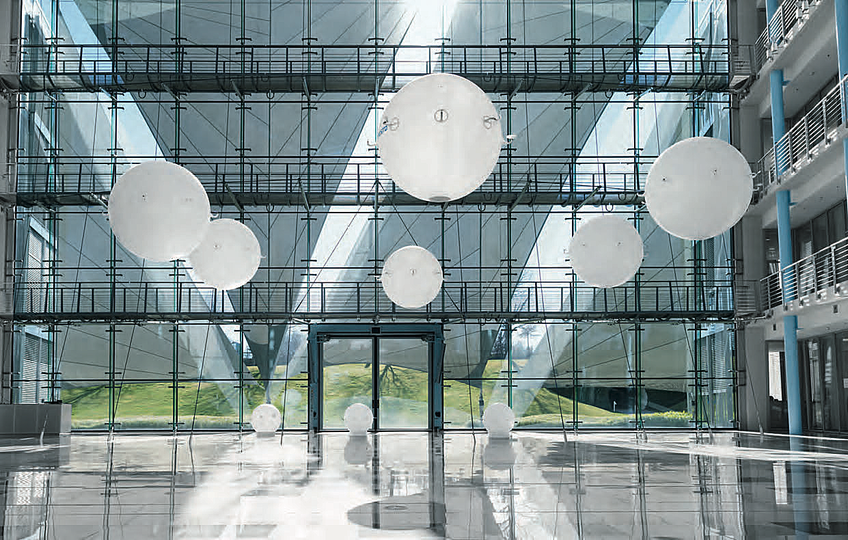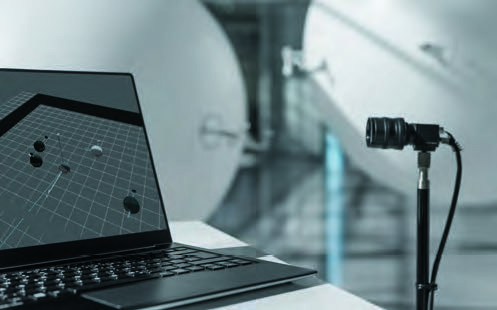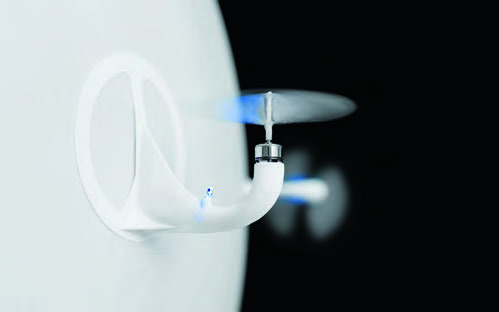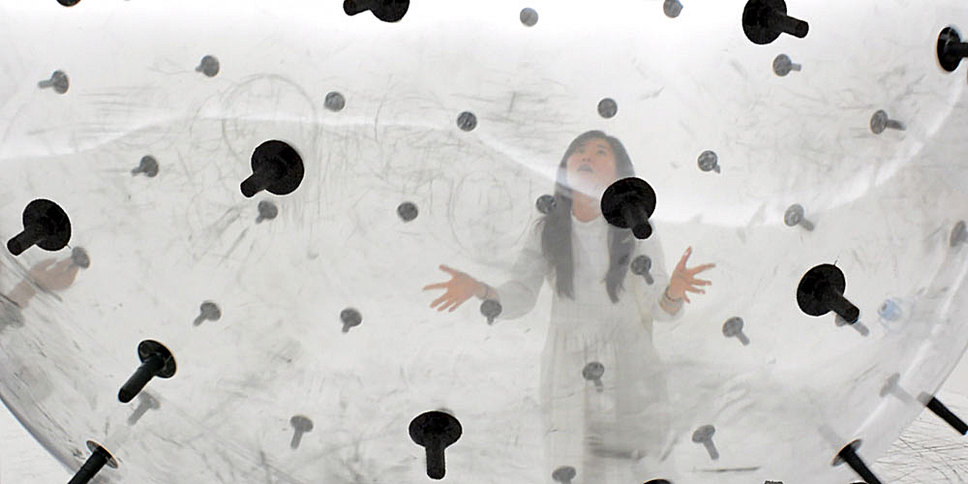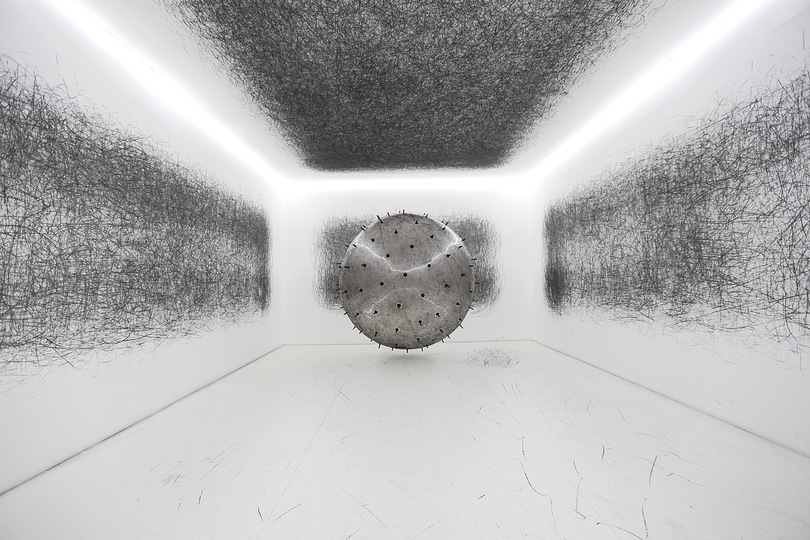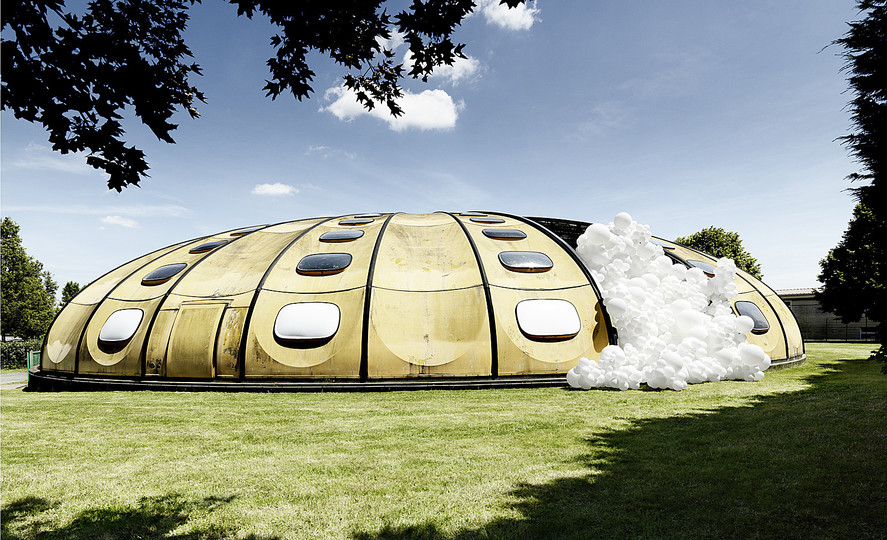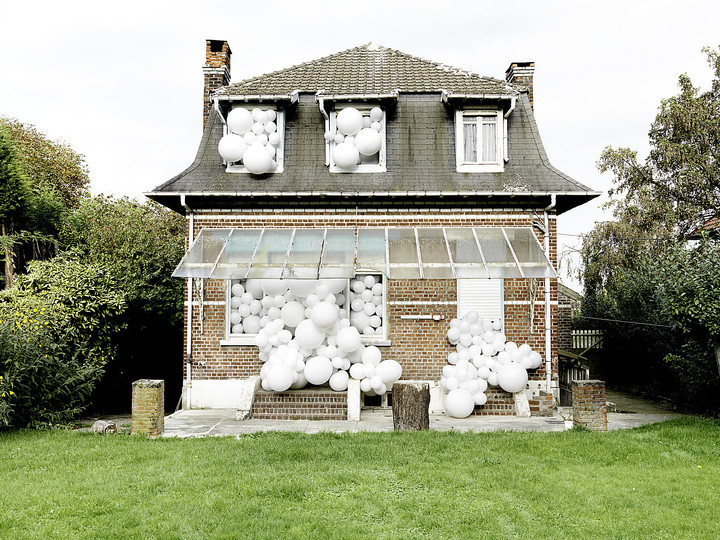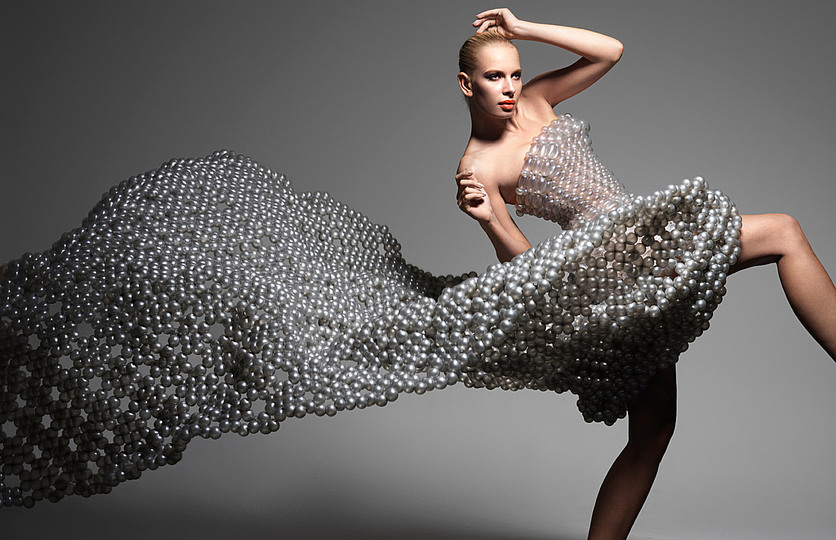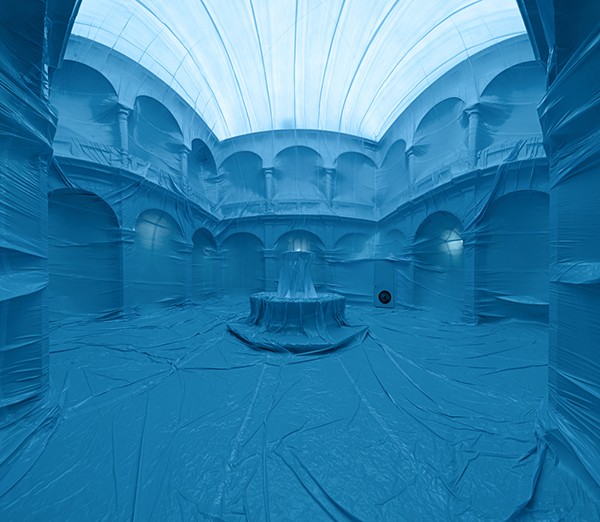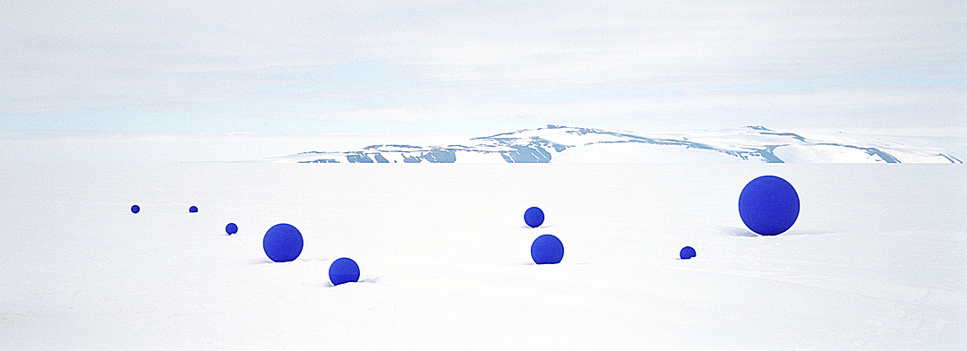A short history of bubbles
The celestial bubble, the focal point of Caravaggio’s mural, was the very artifact to represent the universe. The idea of the universe as a bubble is still around: also physicists today think of the universe as a bubble; it just contains a lot more more than one earth and one sun - where it is observable, the universe holds 400 billion billion suns and many more planets.
In 1720, Bartholomew Gusmao allegedly built a flying machine propelled by hot air and flew it himself in Lisbon in front of the Portuguese royals. In 1783, the brothers Montgolfier constructed a balloon made from sackcloth and paper, held together by cord. They attached a basket with a sheep, a duck and a rooster and demonstrated its flight to King Louis XIV and Marie Antoinette at Versailles palace. The bubble was flying now.
It was again in the sixties of the twentieth century that capturing air became fashionable. In tune with the free-spirited theme of the times, bubbles inspired designers of a whole generation. In 1966, Andy Warhol showed his ‘Silver Clouds’ - helium-filled mylar cushions - at Leo Castelli's gallery in New York.
(Andy Warhol, Silver Clouds, 1966)
In 1967, Italian furniture maker Zanotta introduced ‘Blow’, the first mass-produced inflatable chair for indoor use, designed by Jonathan De Pas, Donato D’Urbino, Paolo Lomazzi and Carla Scolari.
(Inflatable chair "Blow", Jonathan De Pas, Donato D’Urbino, Paolo Lomazzi and Carla Scolari for Zanotta, 1967)
British architecture group Archigram proposed projects such as ‘Air Hab’ and ‘Inflatable Suit House’. In one of Archigram’s publications, Archigram 4, Warren Chalk writes about inspirations from "space comics, mobile computer brains and flexing tentacles”.
(Air Hab, Archigram 1967)
Austria’s Haus-Rucker Co. presented ‘Yellow Heart’, an air-filled PVC structure on a steel frame which inflated and deflated to suggest a heartbeat.
(Haus-Rucker Co., Gelbes Herz (Yellow Heart), 1968)
The world exhibition 70 in Osaka featured a variety of inflated exhibition halls. The US Pavillion was the largest free-span inflatable dome of its time.
(U.S. Pavilion for the World Expo Osaka 1970, Interior sketch, by Davis, Brody, Chermayeff, Geismar, deHarak Associates)
The Fuji Pavillion, designed by Yutaka Muraka, featured ‘Mandala’, a psychedelic movie projected on the interior surface.
Balloons also found their way into television series: In 'The Prisoner', an iconic British Science Fiction series filmed between 1967 and 1968, the main protagonist finds himself captured in ‘The Village’. When he attempts to escape, he is followed and captured by an large white balloon called Rover, an autonomous, intelligent object.
(Patrick McGoohan as Number Six, followed by autonomous balloon Rover in The Prisoner, 1968)
Inflatables symbolized the spirit of the times, carrying with them the idea of generation 68. Ballon designs promised escape, lightness and ephemerality. They offered flexibility instead of rigidity and spontaneousness instead of fixed rules. In the late sixties and early seventies, balloon structures seemed to be the future of architecture.
It was a future which did not happen. Except in some sports halls, ballon architecture did not take on; for everyday tear and wear, balloon structures proved to be too vulnerable.
(Archigram, Instant City, 1968)
But designers, artists and engineers are still fascinated by bubbles. The eMotion spheres by German firm Festo combine science fiction ideas of the sixties with technology from the 2010s. Designed to show the possibilities of autonomous guidance and monitoring systems, these autonomous flying balloons are equipped with eight small adaptive propellers and infrared LEDs. The balloons, controlled by a central computer, move out of the way of other flying objects, adapt to varying atmospherical conditions to maintain their formation, and charge themselves independently.
(eMotionSpheres, Festo 2014)
In her sculpture 'ADA', Karina Smigla-Bobinski attaches graphite sticks to a helium-inflated ballon so that visitors playing with the balloon create sketches on the walls.
In 'Invasions', French artist Charles Petillon fills empty structures with white balloons, creating images with an eerie atmosphere as if from a Sci-Fi movie. He does not fill his balloons with helium, but with Carbon dioxide to illustrate how air pollution has already altered our planet.
Rie Hosokai and Takashi Kawada use balloons instead of textiles to create their surprising, free-flowing fashion designs.
The artist collective Penique productions from Barcelona lets us visit balloons: By turning a space into the inside of a balloon, they dramatically alter our perception of interiors. The artists build a customized ballon for each space they intend to transform and then inflate it to entirely cover the interior walls.
Polar researcher and photographer Jean de Pomereu places blue bubbles in the expansive white snowscapes of Antarctica to create fascinating images with a Sci-Fi touch.
Inspirations.
Bad design is smoke, while good design is a mirror.
— Juan-Carlos Fernandez
— Juan-Carlos Fernandez
- penccil is free.
- No trackers. No cookies.
Just creativity.
